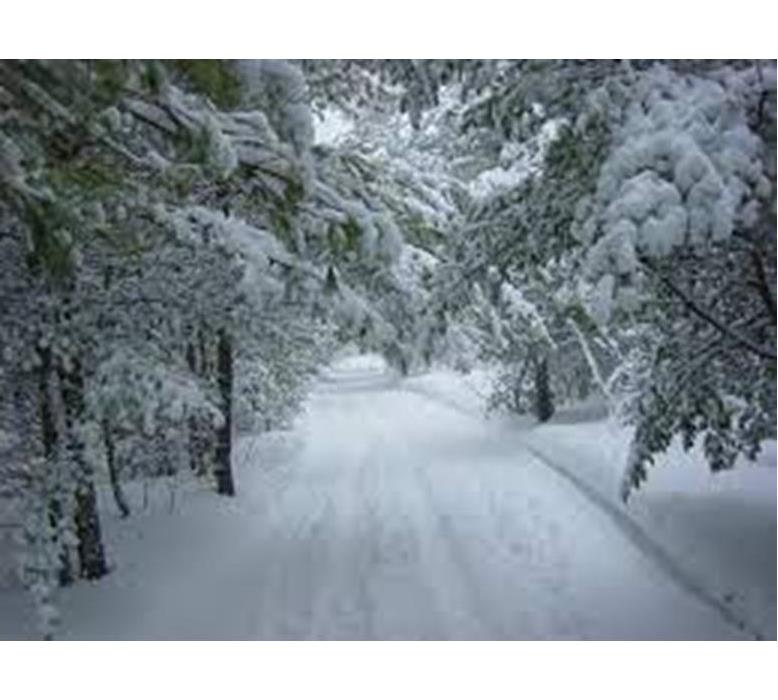Winter Weather Warnings
1/28/2021 (Permalink)
10 Things the National Weather Service Wants You to Know about Winter Weather Forecasts
- 'Not everyone in a winter storm warning is going to get a lot of snow/ice. Some will get nothing at all.'
Forecasters err on the side of caution to ensure nobody is caught off-guard by a crippling storm, and some winter storm warnings will be too large instead of too small. This allows everyone to be properly warned inside an area that may get hit by the storm, but not everyone will always feel the full effects of the system.
- 'It's very unlikely that any snow amount forecast – especially days in advance – will be exactly right.'
Wondering why your area is forecast to receive eight to 12 inches of snow? The science still isn't precise enough to give your town an exact snow total before the storm starts. If you're seeing forecasts that say your town will get exactly 8.6 inches of snow from an event, take it with a grain of salt. Also, the NWS adds that the snow/sleet line isn't as exact as you'll see on some maps.
- 'Don't focus so much on the exact numbers.'
In many cases, the NWS said, forecasters can give you an exact location of where the heaviest snow will fall as opposed to exact snow totals, as mentioned above. Focus on that aspect of the forecast, and if you're in one of those areas predicted to get crushed by snow, take appropriate precautions.
- 'The first forecast numbers won't usually be as good as the ones closer to the event. That's just the way it is.'
This one is very important, and it's a complaint that forecasters frequently hear. Just because the forecast five days ago said you'd get 12 inches of snow doesn't mean you should stop following the forecast. As meteorologists refine the data, those forecasts may change. If you tuned out five days before the event, you can't complain when the actual event is accurately predicted. It's critical that you follow the forecast, because it may evolve.
- 'Often there will be a small area – maybe a county wide – of heavy snow embedded within the main snow band. It is very difficult to pinpoint exactly where this will set up in advance.'
When your forecast says "isolated higher amounts," that's what this means. There's a chance you'll get hit by the heaviest snow from a band, but it's not guaranteed.
- 'Forecasts are updated constantly from days before the event until it actually begins.'
This goes back to No. 4. Forecasts could change several times a day when new data comes in, so you should check back frequently. If you don't do that, you'll have old information.
- 'People tend to focus on and remember the highest number, even if it's from a forecast they heard days ago.'
"The forecast said 12 inches, why didn't we get 12 inches of snow?" is the type of response your favorite meteorologist hears all winter long. Chances are, he or she said "eight to 12 inches," but snow-lovers always lock in on the highest number they hear. You should expect to see accumulations in a range give by the forecaster in his or her most recent forecast.
- 'Forecasts ... often get lumped together, and attributed to the generic "they."'
We're not responsible for the snow forecast given to you by the person who bags your groceries. Secondhand forecasting is often bad forecasting.
- 'It seems like the more people are talking about it, the worse it's going to be, but that's not always the case.'
Social media tends to blow weather events out of proportion, and it seems the further out we can forecast a big event, the crazier the chatter gets. If the forecast for a snow event in your area seems too good to be true, it probably is. That's a good sign to check in with a trusted forecaster and see what's the latest.
- 'Having too much snow forecast information can be confusing.'
Yes, there can be too much of a good thing. Social media-rologists can post forecast model data with gaudy forecasts that probably won't pan out because they get a lot of shares due to their eye-popping information. Again, trusted sources are the way to go when you're looking for the best forecast.
BONUS: 'Timing can mean everything.'
From Tom Niziol, winter weather expert at The Weather Channel: "Often it is not the amount of snow or ice that may occur, but the time of the day and the day of the week that can determine the impacts on the public. If you are expecting winter weather during the high volume traffic times of the day or week and can at all avoid getting out on the road, you will save yourself a lot of grief."
BONUS: 'Not all precipitation is created equally.'
With regards to model data, allow meteorologists to give you that; don't try to read it on your own. If a model shows 8 inches of precipitation, that could mean eight inches of rain. But when converted to snow, that could mean a whole lot more.
From Mark Elliot, meteorologist at The Weather Channel: "One inch of rain can turn into anywhere from five to 50ish inches of snow, so small errors in the precipitation forecast can have huge repercussions in the world of snow forecasting."






 24/7 Emergency Service
24/7 Emergency Service

